10 Mistakes Your Business Might Be Making on LinkedIn You'll want to steer clear of these no-nos on the professional networking site.
This story originally appeared on Business Insider

LinkedIn isn't just a good resource for professionals. When used the right way, it can be a powerful tool for businesses, too -- and not just for recruiting, the way most managers think of using the site. Businesses that navigate LinkedIn properly engage customers, generate sales leads, and swap internal information among employees.
We got in touch with Krista Canfield, LinkedIn's senior manager of corporate communications. True, it's her job to get people to use LinkedIn, but we think she has a perspective worth sharing, since she trains companies on nontraditional uses of LinkedIn. She knows the platform like the back of her hand, having joined LinkedIn when it only had 18 million members and 200 people on staff (now it has 187 million members and 3,177 employees). Her team has also trained more than 13,000 journalists to better navigate LinkedIn.
Canfield told us the most common mistakes she sees businesses make on LinkedIn, and how all companies can use the professional social network better.
Your company doesn't follow competitors on LinkedIn
LinkedIn company pages can be a good way to keep tabs on the competition.
"When you follow a competitor's LinkedIn Company Page, you can find out what talent is joining, and leaving, those companies," Canfield says. "You'll also get updates from the companies (when they share recent news articles or discussions with their followers) and you'll be the first to know when they post jobs on LinkedIn. This information can help clue you in to the direction those companies might be heading in."
Canfield also recommends following company pages for partners, potential customers and acquisition targets on LinkedIn.
Your employees haven't spent much time on their LinkedIn profiles
Employees are an extension of your brand on LinkedIn, so it's important to make sure their profile pages are a good representation of your company.
"LinkedIn Profiles (which appear in Google search results not just for names, but also in web searches for skills and areas of expertise) may be the first encounter a potential customer or business partner has with your company," says Canfield. "A bare-bones profile on LinkedIn suggests that your employees and your company may not have stellar online networking skills, so encourage your people to fill out their profiles so they are 100 percent complete."
Canfield suggests even little touches, like making sure employees have uploaded profile pictures. A LinkedIn profile is seven times more likely to be viewed if it has a photo.
Your company isn't sharing the right kind of information at the right time on LinkedIn
"Whether you're sharing media hits about your company via your LinkedIn Company Page or sharing articles with your LinkedIn network, there are a few useful tips you should keep in mind," says Canfield.
"Post in the morning for best reach, add links when possible, share videos to drive amazing viral engagement, and tell people what action you want them to take on your update (so specifically call out that you'd want viewers to like, share and/or comment on your discussion)."
Managers of your LinkedIn Company Page can also target messages and updates to specific people. They don't have to send it to every follower of that page.
Related: One Of New York's Best Investors, Chris Dixon, Is Moving To Silicon Valley
Your employees aren't connecting with each other or swapping information on LinkedIn
"By connecting your employee base, you'll be opening up a whole new world of second-degree connections outside your company," says Canfield.
"Joe the receptionist could have a best friend that works over at Nike, which just happens to be the dream client that Sarah in sales is trying to land. Trusted introductions from colleagues are a great way for any business to locate the experts they need quickly and cost effectively."
Employers can follow what their employees are sharing on LinkedIn too.
Canfield says all updates can be sorted on LinkedIn's homepage (see photo).
"When you first log into LinkedIn, just below where you can share articles or an update with your network, you should see, 'All Updates,' in bold font," she explains. "If you hover over, "All Updates," you'll notice you can sort your updates so you just see what your coworkers are sharing on LinkedIn. This is an easy way to virtually hang out at your company water cooler."
You're active on LinkedIn, but no one would know it from your website
If you don't have a LinkedIn button on your company website or blog, you're missing out on an easy way to share content on LinkedIn.
According to Canfield, more than 1.3 million publishers have a LinkedIn Share button on their sites. The buttons are free and easy to add, and they can drive immense traffic. They can also increase audience engagement.
There's a Share plugin, a Share API, and a "Sign in with LinkedIn" button.
Your company has a lot of products and services, but you don't list them all on LinkedIn
"It's easy to add a Products & Services tab so potential clients know what offerings you have, and which LinkedIn members have recommended those products and services," says Canfield.
"Make sure you've taken the time to add this tab to your LinkedIn Company Page so that potential clients can see all of your offerings."
Related: Where 16 Of The Strangest Company Names Came From
You haven't created an exclusive LinkedIn group for your employees
Canfield recommends creating a members-only LinkedIn group that's just for current employees. It can become a tool similar to those offered by Yammer or Asana where your team can swap ideas, and the discussions won't show up in search results.
"At LinkedIn, we have our own LinkedIn Group that's just for current employees. The group is a great place for us to share news articles, raise problems that need to get fixed and brainstorm about ways we can make our service even better," says Canfield. "It's an amazing way to capture all of the ideas our people have from across all of our different departments and offices around the globe while also saving our inboxes a bit of space."
You haven't created a group for your customers either
If you create a group for your customers, they can share experiences and what they've learned by using your service with each other. Some great ideas on how to improve your product can surface in a group like that, says Canfield.
It can also be a great way to convert a strong lead into a paying customer. Canfield recommends checking out Citi's LinkedIn group, which has nearly 80,000 members, for inspiration.
You don't participate in group discussions on LinkedIn or, if you do, you're spamming them
It's important to hop into discussions in relevant groups on LinkedIn, says Canfield. Just make sure you're actually participating in discussions, not spamming them with links and information about your business.
"Look at groups like mini conferences where you can learn about business topics you're interested in or curious about," says Canfield. "Get to know other group members and provide them genuine advice/feedback. Don't just blindly blast them with sales pitches and unsolicited information about your business."
To find relevant discussions, surf LinkedIn Groups and LinkedIn Answers.
Related: Now THIS Is The 'Right Way' To Start A Company
You haven't gone mobile with LinkedIn
LinkedIn isn't just a desktop tool. It has a suite of free mobile apps that help you and your employees see where people work and find common connections with them. The apps can be useful at conferences or out-of-office meetings.
One of LinkedIn's most helpful mobile solutions is CardMunch, a startup it acquired last year that makes it easy to stop collecting physical business cards. With CardMunch, you can take a mobile photo of someone's physical business card. CardMunch will then pull all the data from the photo and store it as a mobile contact so there's no need to keep (and probably lose) a hard copy.
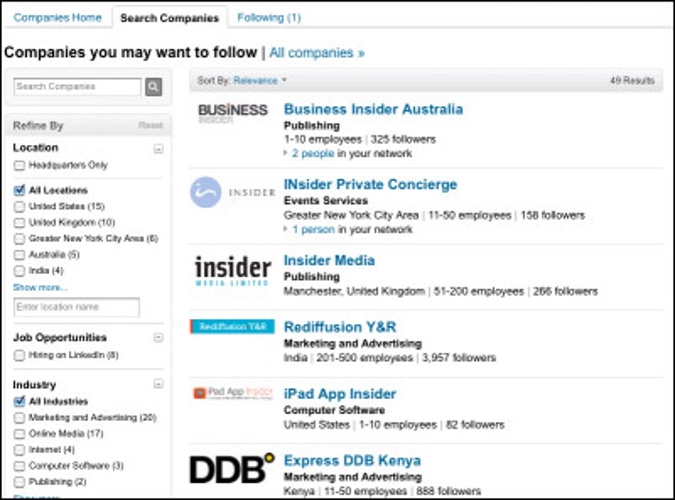 LinkedIn
LinkedIn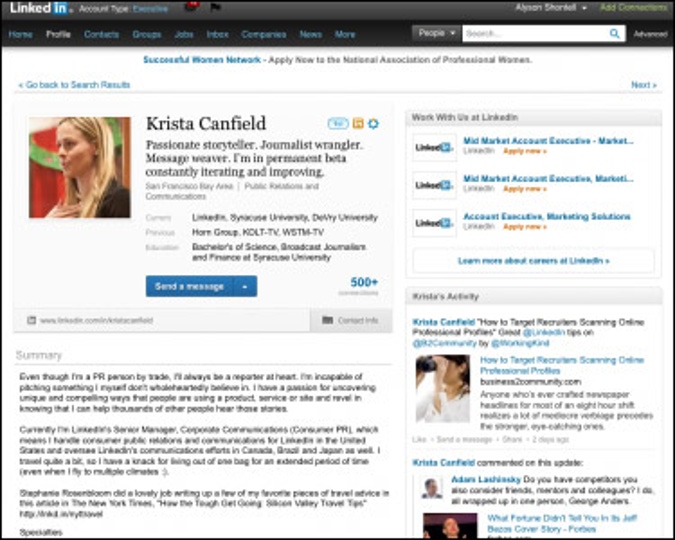 LinkedIn
LinkedIn LinkedIn
LinkedIn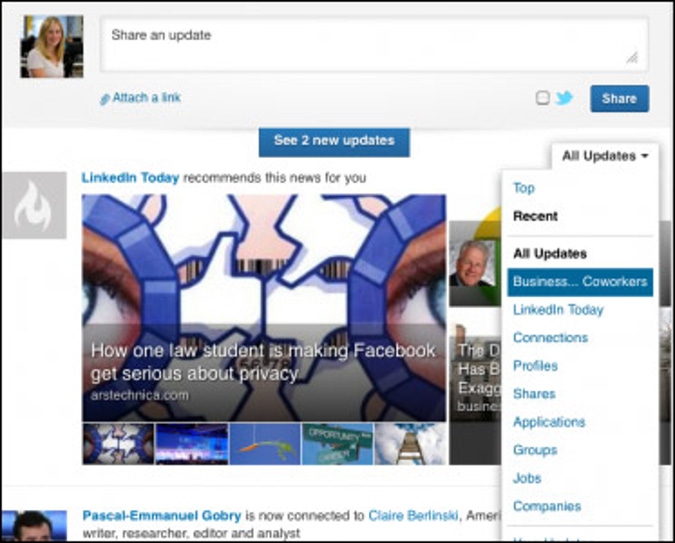 LinkedIn
LinkedIn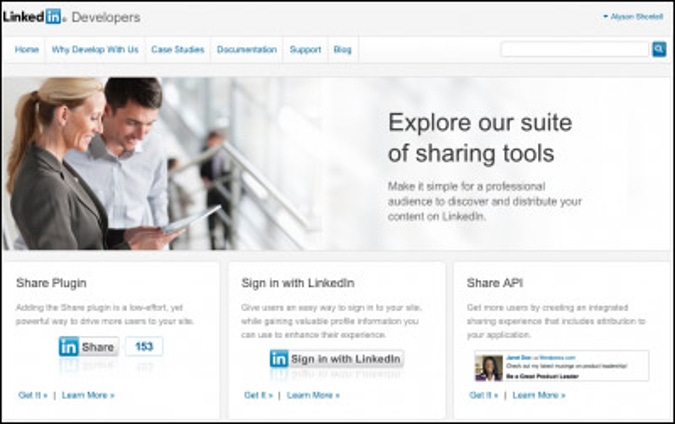 LinkedIn
LinkedIn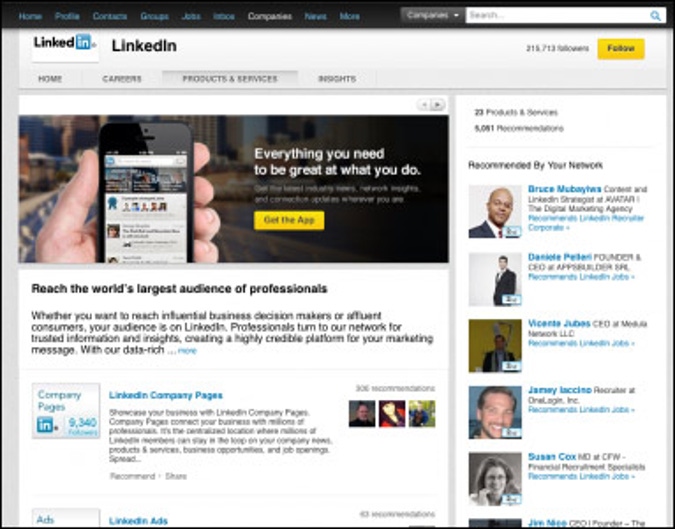 LinkedIn
LinkedIn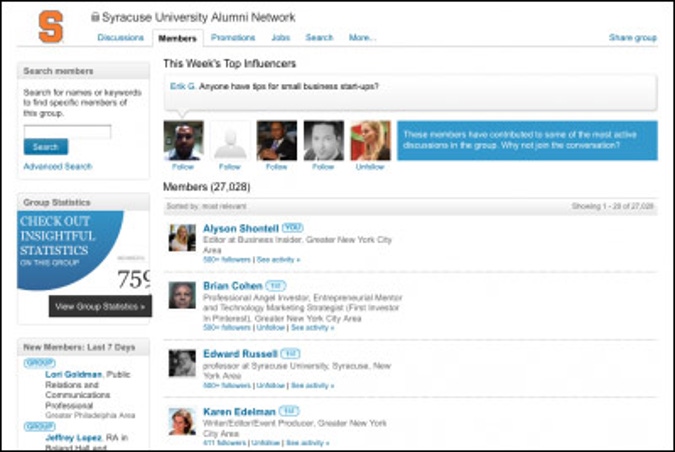 LinkedIn
LinkedIn LinkedIn
LinkedIn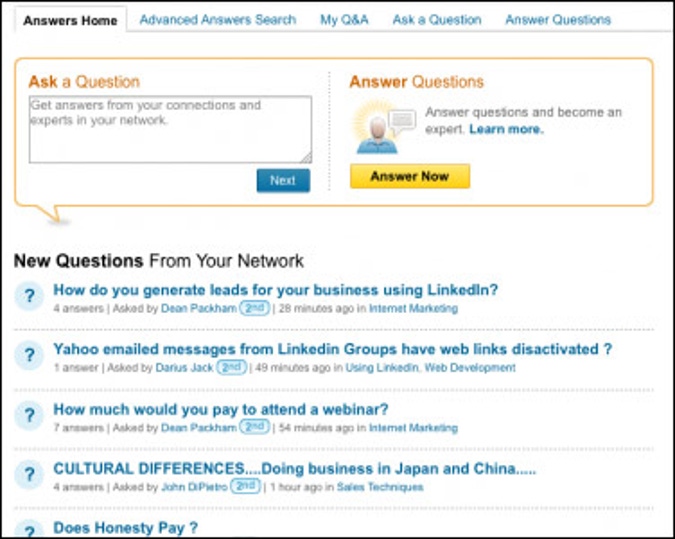 LinkedIn
LinkedIn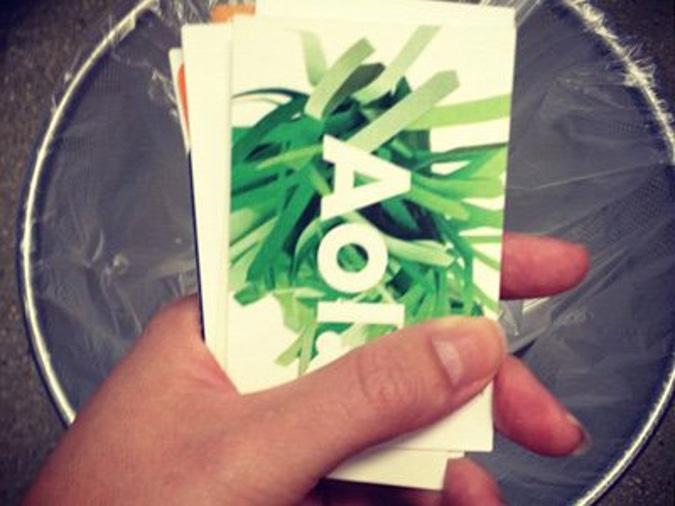 Alyson Shontell/Instagram
Alyson Shontell/Instagram









